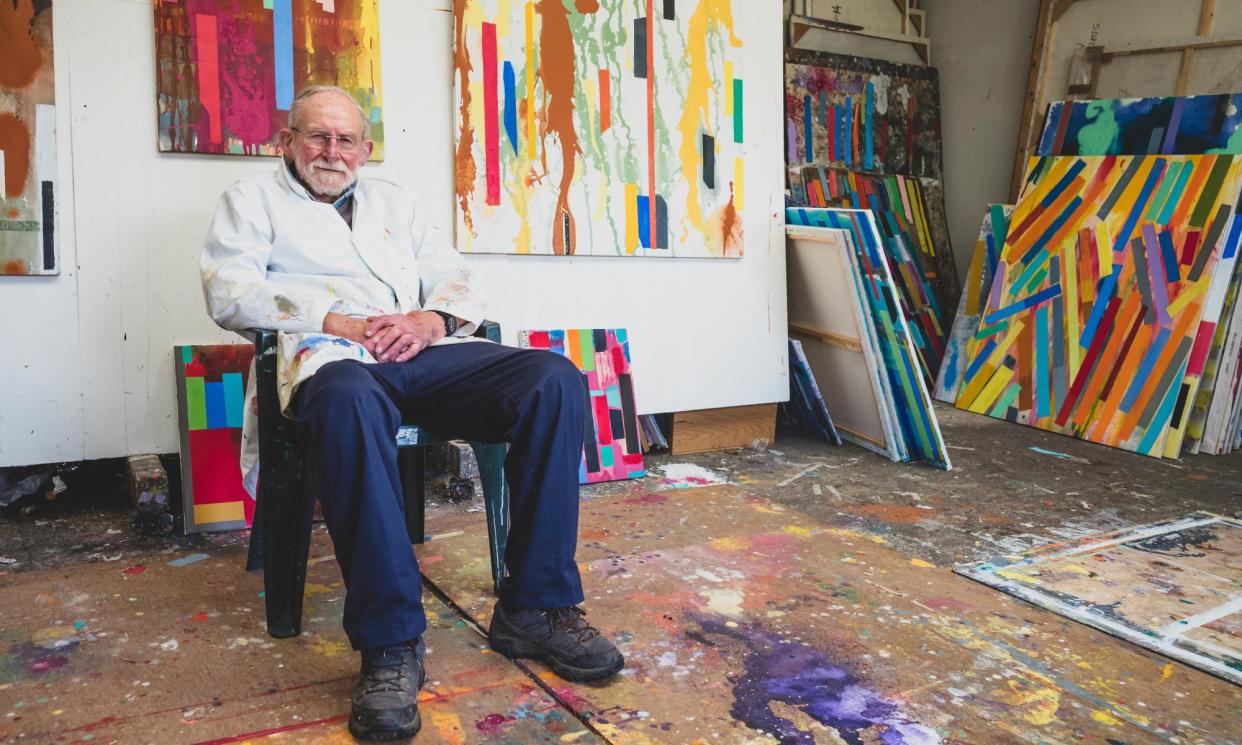Graham Boyd obituary

When abstract expressionism arrived in Britain in the 1950s, Graham Boyd, who has died at the age of 96, was one of few artists who embraced the libertine scale and dynamism of American painting. Over a 70-year career, based latterly in Chipperfield, Hertfordshire, he made his own explorations of colour and light in non-figurative paintings and sculpture.
Born in Bristol to Herbert, a leather tradesman, and Hilda (nee Duckett), Graham’s path to abstraction was not straightforward. After two years of national service with the Bedfordshire and Hertfordshire Regiment, in 1948 he revisited his postponed studies in illustration at Watford Art School, though his heart was drawn to oil painting. Then in 1953 a short-lived relationship led him to Southern Rhodesia (now Zimbabwe), whose vast landscapes and vibrant ecology revealed to him a world in constant flux. It was an experience that irreversibly altered the trajectory of his painting, toward vivid colour and abstract form.
Returning from Africa in 1955, Graham secured a space at the dilapidated Meadow Studios in Bushey and began selling through the gallerist Leslie Waddington. In 1957 he was selected for the inaugural John Moores Exhibition at the Walker Art Gallery in Liverpool, which bought his three-dimensional relief, Nation, and in 1962 he held his first solo show at the Artists International Association in London. In August of that year he married Pauline Eastall, a dancer and instructor.
A second breakthrough came in 1973, when Graham accepted a year-long exchange professorship at Plymouth State College in New Hampshire. He spent the summer driving across the US with his young family to the Grand Canyon, inspired once more by the majesty of the landscape.
A natural experimentalist – he was an early adopter of acrylic paints, mixed with sand and glue or discharged through a spray-gun – Graham returned to the US in 1983 to participate in the second Triangle Workshop, founded by the sculptor Anthony Caro in upstate New York. Caro became a close friend, describing Graham as having “the least ego of any artist [he’d] met”.
In the last 30 years of Graham’s career he enjoyed almost yearly solo shows, culminating in a retrospective at the Goldmark Gallery, in Uppingham, Rutland, in 2021. As part of the three-man team who filmed and interviewed Graham for a major documentary on his work, I got to know him well over several months.
Though ill health had severely compromised his mobility, his excitement was infectious as he recounted wild parties with Gwyther Irwin, a fellow artist, or when slinging a canvas to the studio wall to demonstrate what he was working on. Nothing could diminish Graham’s fascination with his craft. As Pauline’s carer in the 10 years before her death in 2011, and in his last days, he continued to find ways to paint – even if it meant asking his own carers to fill in a corner here or there.
Graham’s last exhibition, Volatile Creatures (2022), was at the University of Hertfordshire, where from 1976 to 1993 he had served as head of painting; in 2019 he was awarded an honorary fellowship.
He is survived by his son, Andrew, and daughter, Sophie, and two grandchildren.


